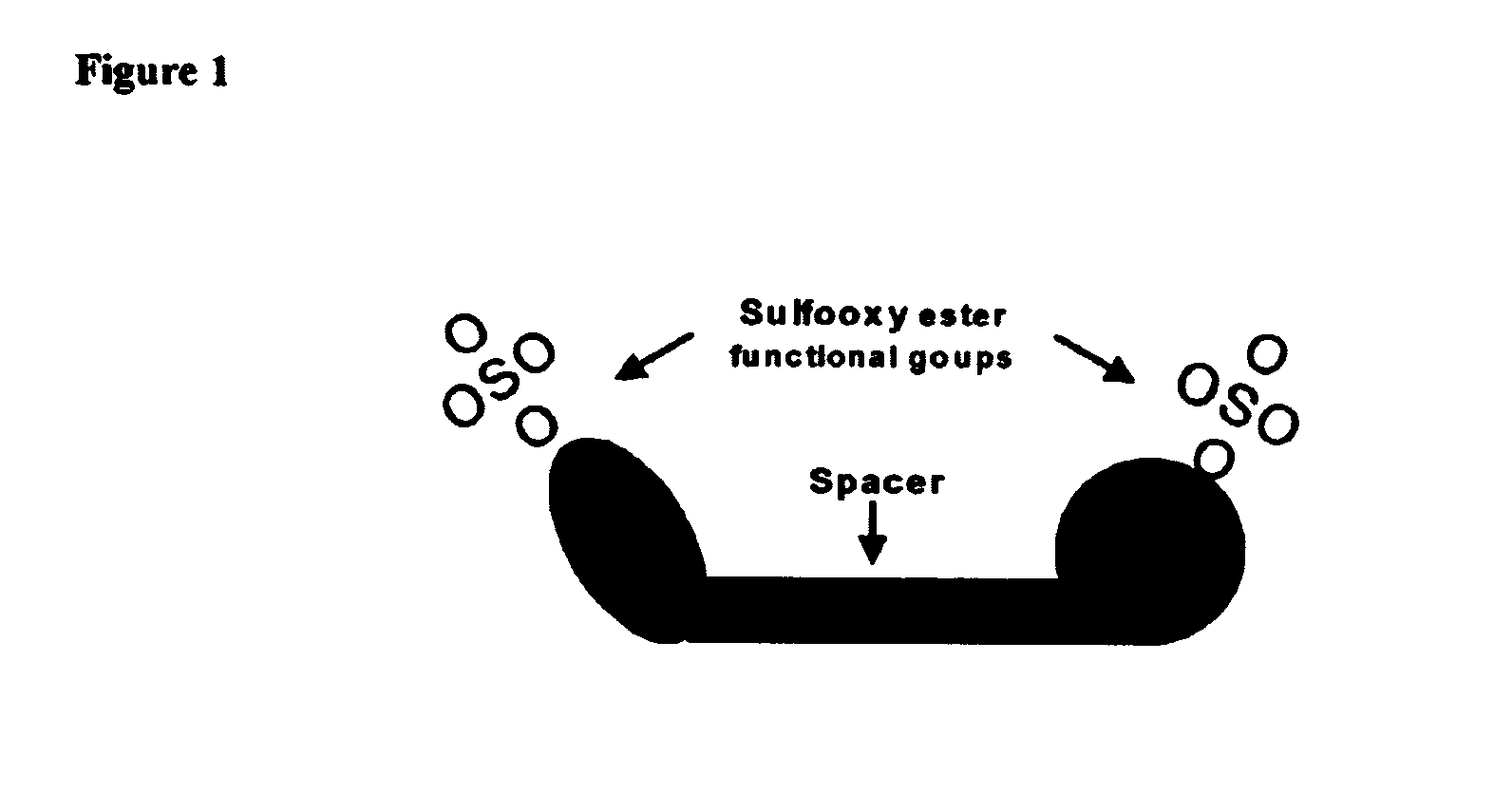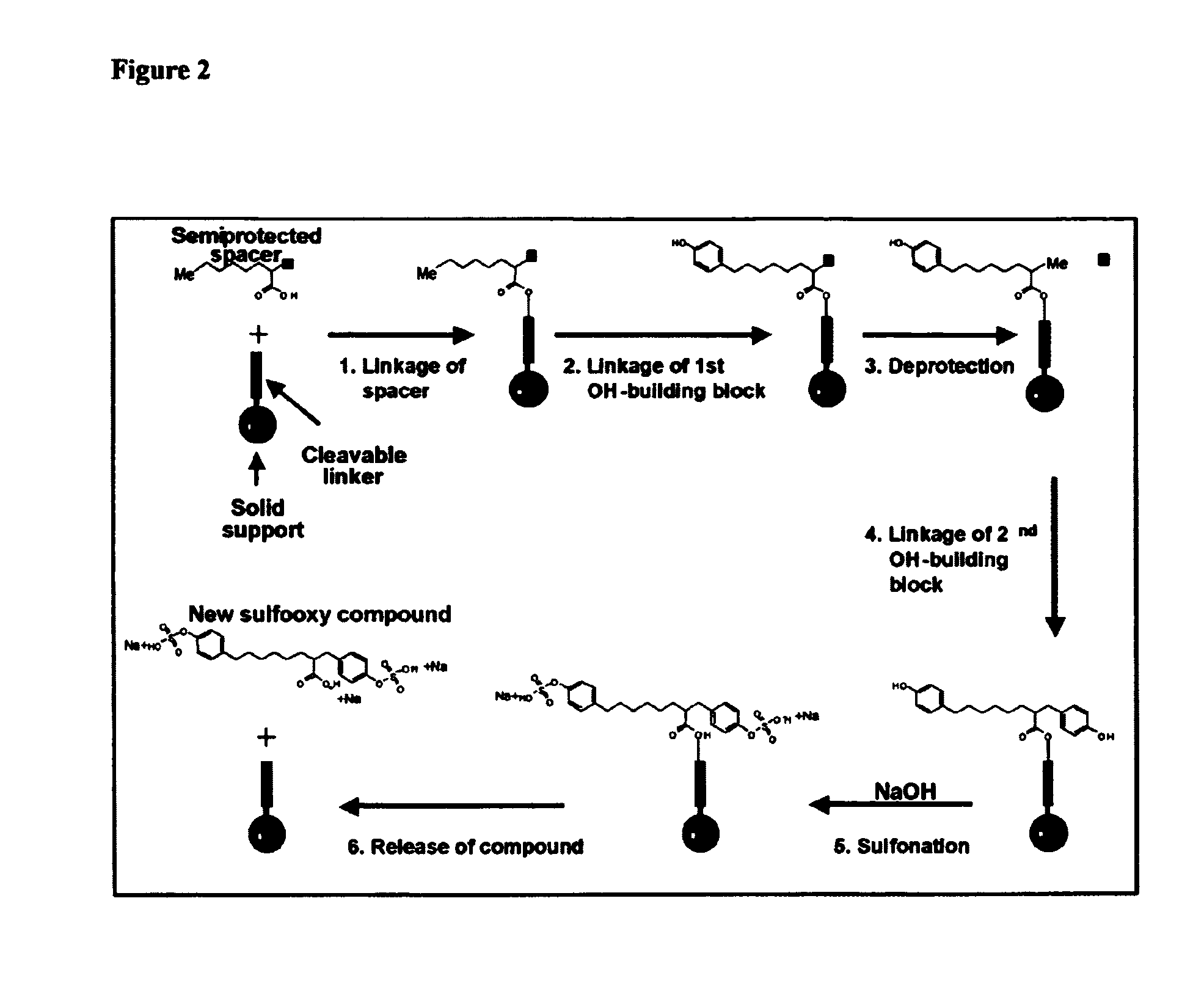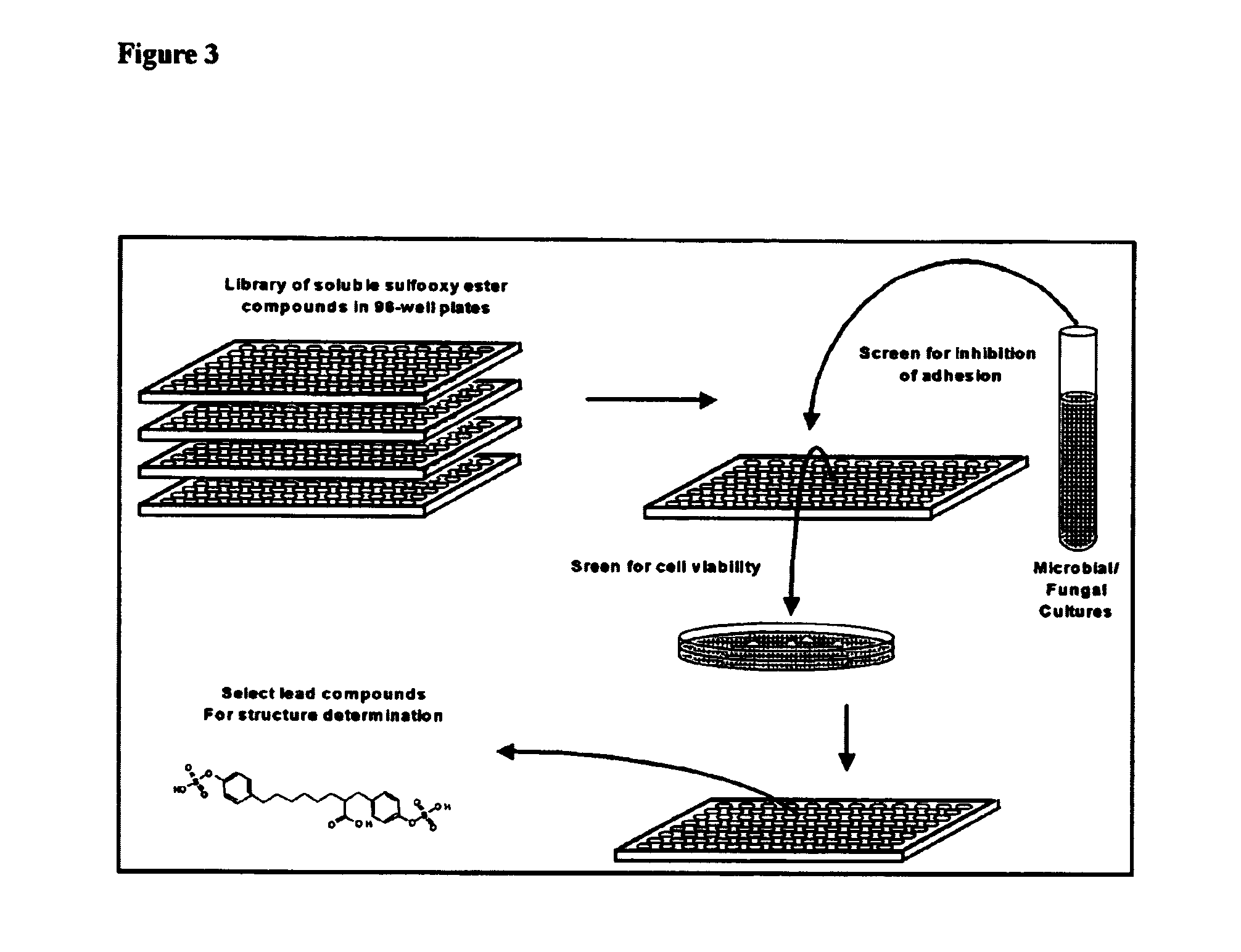Generation of combinatorial synthetic libraries and screening for proadhesins and nonadhesins
a synthetic library and proadhesin technology, applied in the field of combinatorial synthetic library generation and screening for proadhesins and nonadhesins, can solve the problems of increasing friction, reducing heat exchanger heat transfer, and affecting the performance of the heat exchanger, so as to enhance the adhesion to the surface
- Summary
- Abstract
- Description
- Claims
- Application Information
AI Technical Summary
Benefits of technology
Problems solved by technology
Method used
Image
Examples
example 1
General Procedure for Screening Compounds for Activity
[0237]
[0238]The results of screening the four compounds shown above are representative. Compounds were packaged in 2–5 mg quantities in wells A02-D02 of a 96-deep well polypropylene microplate, tightly sealed with a plastic dimpled lid. The four compounds were handled under slightly different conditions as they fell into two solubility classes. Compounds A02 and B02, insoluble in water, were dissolved in DMSO and tested at a final concentration of 0.5% with 5% DMSO, a concentration of DMSO that has no effect on any of the organisms used in the assays. Compounds C02 and D02, soluble in water, were dissolved in E-pure water, and tested at 0.5% after having been adjusted to the proper buffer condition for the assay. The compounds were tested in three species, Staphylococcus epidermidis, important in human pathology, Colletotrichum acutatum, a plant pathogenic fungus, and Pseudoalteramonas atlantica, a marine biofouling bacterium. Th...
example 2
Inhibition of Adhesion of Cells or Spores to Polystyrene Surfaces
[0239]The results tabulated herein were generated using the protocol described in Example 1.
[0240]
CompoundepidermidisatlanticaacutatumCompound A0222%−12%Compound B02−16%Compound C02 6%−36%Compound D0274%32%−19%
example 3
[0241]
96-Well Plate Assay for Activity Against Staphyloccocus epidermidisReagents Used:10XPBS80 gNaCl1L2 gKH2PO411.35 g / 21.4 gNa2HPO4 / Na2HPO47H2O2 gKClpH 7.2SYTO 135 mM in DMSOLB growth media[0242]1. S. epidermidis (ATCC #12228) is grown on nutrient agar plates from −70° C. stock, a single colony should be picked and subcultured in LB media for overnight growth at 37° C. shaking 200 rpm.[0243]2. Next day use 1 / 100th volume of overnight culture to start new culture, this culture will need to grow for 4–5 hr which will be early log phase of growth.[0244]3. Pour culture into 50 mL conical tubes and centrifuge at 3000 rpm for 10 min at R.T., pour off supernatant and gently re-suspend pellet in 0.5 volume of original culture with 1×PBS buffer.[0245]4. Use this re-suspended culture to determine OD using the Shimadzu spectrophotometer and dilute cells to 1 OD at 600 nm.[0246]5. Experimental controls and samples need to be added to wells prior to adding cells, positive control at 2%, 1%, an...
PUM
| Property | Measurement | Unit |
|---|---|---|
| diameter | aaaaa | aaaaa |
| volume | aaaaa | aaaaa |
| OD | aaaaa | aaaaa |
Abstract
Description
Claims
Application Information
 Login to View More
Login to View More - R&D
- Intellectual Property
- Life Sciences
- Materials
- Tech Scout
- Unparalleled Data Quality
- Higher Quality Content
- 60% Fewer Hallucinations
Browse by: Latest US Patents, China's latest patents, Technical Efficacy Thesaurus, Application Domain, Technology Topic, Popular Technical Reports.
© 2025 PatSnap. All rights reserved.Legal|Privacy policy|Modern Slavery Act Transparency Statement|Sitemap|About US| Contact US: help@patsnap.com



